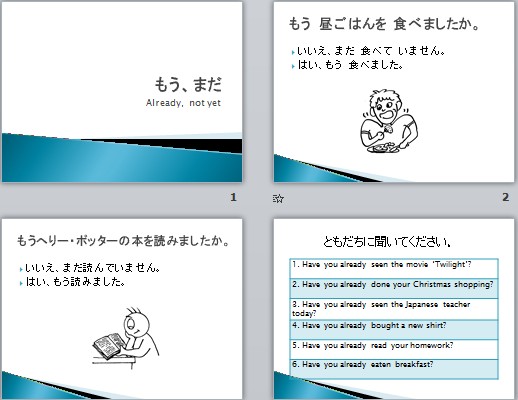

However, there are more words for evening or night in Japanese like 夜, 晩, 夕 which can be confusing. Similarly to the words for lunch, the words for dinner are also mostly compound words made of a meal word and the time it is eaten. You can use it to ask people to come for afternoon tea or going out to a cafe.ĭo you want to go for tea sometime? Dinner It doesn’t necessarily mean only “tea” but it could be coffee, snacks, cake, tea, or other traditional sweets. However, in Japanese, the culture of tea is so important that all of these might be expressed with the term お茶, meaning “tea”.

In English, we might be used to saying “let’s grab a coffee” or “ do you want to go to a cafe?”. It’s a word that is used in formal situations that signifies that the food will not be a meal but something like a snack. This refers to a light meal or snack that might be given out at meetings, airplane flights, or when working over-time. I’m excited for snack time! 軽食 – Keishoku Japanese children often associate snack time being around 3pm. There is a phrase in Japanese called 三時のおやつ ( Sanji no oyatsu), which means “three o’clock snack”. Parents will often use this word with their children. This is one of the most casual and childish ways of saying “snack”. What was today’s school lunch? Snack/afternoon tea It also helps teach young students about nutrition and to be grateful for the food. The students help out with serving the meal. It is not simply a school lunch, but it consists of a balanced and fresh-cooked meal. This means “school lunch” and is a combination of 給 ( kyuu), meaning “to give out” and 食 ( shoku), meaning “to eat”. お弁当 are either made at home or bought outside in convenience stores or train stations. These days, お弁当 not only comes in the form of rice and side dishes, but there are also packaged sandwiches or cute character お弁当 called キャラ弁 ( kyaraben). It is also said to come from the word “convenient” in Chinese. It has a long history and possibly originates from the 12th century.

お弁当 usually consists of rice and side dishes in a container. This is a very important part of Japanese culture and refers to a “packaged lunch”. Also, many cafes and restaurants will display this word to appear more attractive. In the case of the word ランチ, women and girls might use this word to sound more stylish. Japanese people feel that words from other languages are more hip or trendy. However, in service industries towards customers or in big events, it’s important to know that the word “lunch” would not be お昼, but 昼食. For example, it would be possible to say this to your boss: It can even work in certain polite situations. It can casually be used among friends and family. It simply adds an お, as a polite form, to the word 昼, or noon. This is the most versatile way of saying “lunch”. What should we have for today’s lunch? お昼 – Ohiru It’s used mainly by men when talking to someone of equal or lower social status. 昼飯 – Hirumeshiīecause of the word 飯, this is the most informal form of saying “lunch”. Lunch will be served in the room next door. Lunch will be served at a three-star restaurant.Ĭhuushoku wa tonari no heya ni youi shite orimasu. Mitsuboshi resutoran de no chuushoku to narimasu. It may be used by event coordinators, hotels, or other service industries. This is a polite and more formal way of saying “lunch”. 昼ごはん is the word used more commonly among friends and family. As explained earlier, the word rice, ごはん, has become synonymous with the meaning for “meal” in Japanese. This word for “lunch” can be directly translated as “noon rice”. Adding the word 昼 ( hiru), or noon, to the words for “meal” can turn them into “lunch”. It’s reflected by the fact that people might be out of the house during lunchtime work, school, or dining out. There are many different ways of saying “lunch” in Japanese. Here are also some situations where ごはん is used for the word “rice”: Here are a few sentences where ごはん is used as the word “meal”: ごはん, is mainly used in casual Japanese with friends and family. This is why the same word for “rice” is used for the word “meal”. Back in the day, most people ate meals that consisted of rice, soup, and side dishes. In Japanese cuisine, rice is considered as the 主食( Shushoku) or “staple food”. This word, also written ご飯, literally means “rice” but it can also mean “meal”. Since Japanese has varying levels of formality in the language, there are differences in the politeness levels of these words. These words can be used at any time of day, and it doesn’t specify the timing of the meal. The following words all mean “meal” in Japanese.


 0 kommentar(er)
0 kommentar(er)
